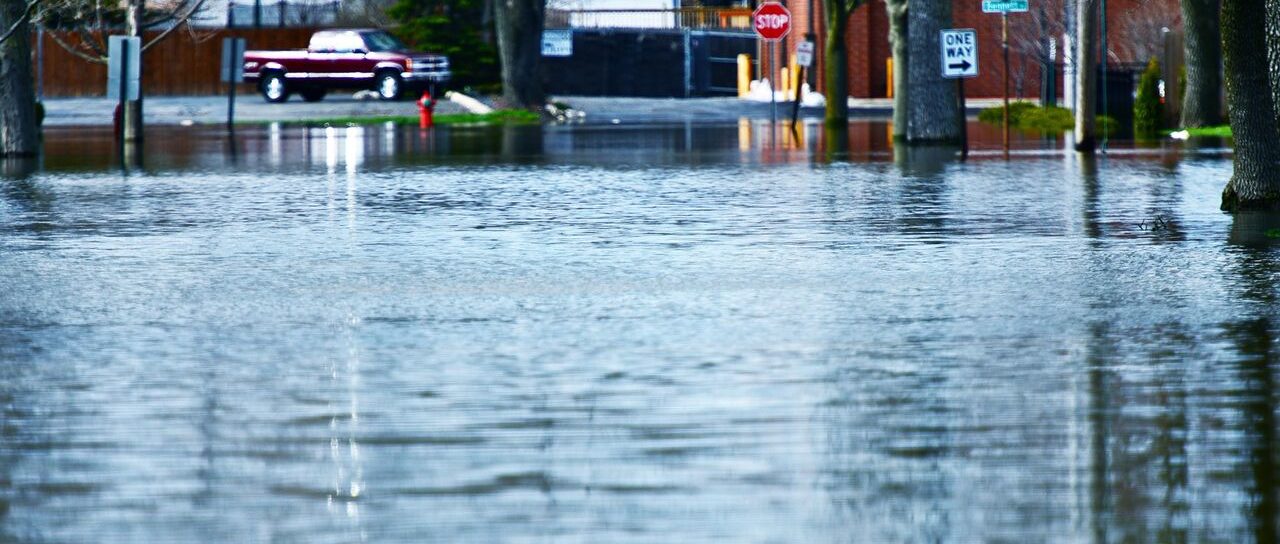
Flooding has been a greater problem for Texas businesses in recent years. With more than 360 miles of coastline, communities like Houston, Corpus Christi, Galveston, and Port Arthur, hurricanes, tropical storms, and other severe weather can result in flooding. Historically, Texas ranks number three in flood risk in the United States.
Wind and rain throughout the I-45 corridor contribute to floods in Dallas. Central cities in Texas, such as Austin and San Antonio, are located in a region Texans call Flash Flood Alley, because random heavy rain often causes floods there.
What is the Flood Impact on Business Operations?
If your Texas business or organization is flooded, you may wonder what to do next. How do you pick up the pieces? In the recent past, Texas businesses faced damages and losses estimated in the billions of dollars. Damages and losses range from minor cosmetic blemishes to total losses on high rise buildings and freestanding office buildings and warehouses.
A major flood can disrupt or completely shut down business operations. If the business can’t deliver its product or service, cash flow declines. For these reasons and others, it’s essential for the business to submit its commercial claim to the insurer and receive payment for its valid claims in a prompt manner.
For many commercial enterprises that have flood insurance in Southeast Texas, the process of submitting a valid flood claim and receiving prompt payment is confusing and frustrating. Many Texas commercial enterprises have NFIP policies while others maintain private market flood insurance.
Texas Commercial Flood Claims Control and Administration
Most commercial flood policy contracts are controlled by NFIP (the National Flood Insurance Program) and administered by FEMA (the Federal Emergency Management Agency). NFIP’s special rules for submitting claims must be factored into the commercial flood claims process from the start.
Note that a commercial business insurance policy might cover some wind damage, but it probably won’t cover groundwater flooding.
How to make a commercial flood claim in Texas
Contact the insurer as soon as possible to advise them of your intention to file a claim. Prepare and provide the insurer with an accurate description of damages and losses the business sustained.
You’ll be assigned a claim number. Write it down and keep it in a safe place. If you need to contact FEMA or your private commercial flood insurance carrier later, you’ll need to refer to the claim number.
Ask the agent when to expect an insurance adjuster will reach out to you. According to USA Today, it could take FEMA anywhere from one week to six months to send an adjuster to assess the loss or damage.
- Fill out a proof of loss statement with the insurer
- Generally, the business has 60 days from the date of the loss to file the proof of loss.
Don’t wait to get on with your business affairs. It’s up to you to do what’s necessary now. Insurers call this “mitigation.”
What if the business purchased private market flood insurance?
Recognize that, even if you purchased commercial flood insurance from a private insurance agent, you probably purchased NFIP insurance. If your business location was considered high risk, you may have purchased a private insurance policy. In that case, you may have purchased separate flood policies for the office building or warehouse and its contents.
It’s generally considered that when an insured brings a lawsuit on commercial flood claims under NFIP, the only possible recovery is “actual” damages.
However, cases tried in federal district court fined NFIP’s agents for bad faith for the unfair handling of claims and went on to assess damages in excess of the contract.
What’s more, if the private flood insurance underwriter acts in bad faith, don’t wait to cry foul. You need an experienced commercial flood insurance attorney to hold the insurer accountable.
If Your Business is Flooded
After a flood event, tens of thousands of claims may be presented for payment. Properly document your commercial flood claim:
- Take pictures and videos. When possible, attach a list of the damages, approximate values, purchase date, and value.
- If you must make repairs to the commercial space, keep records of expenditures. Don’t wait for the insurer to pay your commercial flood insurance claim to get on with business.
- If you must move to a new location for a period of time, keep receipts for everything, including hotels and meals that are eaten out.
- Don’t discard damaged items before your meeting with the insurance adjuster if at all possible. However, if your municipality demands items to be thrown away for safety reasons, take photos or videos to support the claims process.
- Start a claim diary. Record contact details of those you communicate with at the insurance company, including the issues discussed as well as the date and time of the conversation.
- If you have private flood insurance, your insurer may offer text alerts to update you on claim status. In that case, you should receive details about the estimated claim and when to expect payment.
Summing Up: Texas Commercial Flood Claims
If your business or organization has experienced flooding and you experience bad faith behavior from the insurer, contact an experienced Houston bad faith insurance claims attorney. The Mindiola Law Firm is standing by to discuss your case at .


